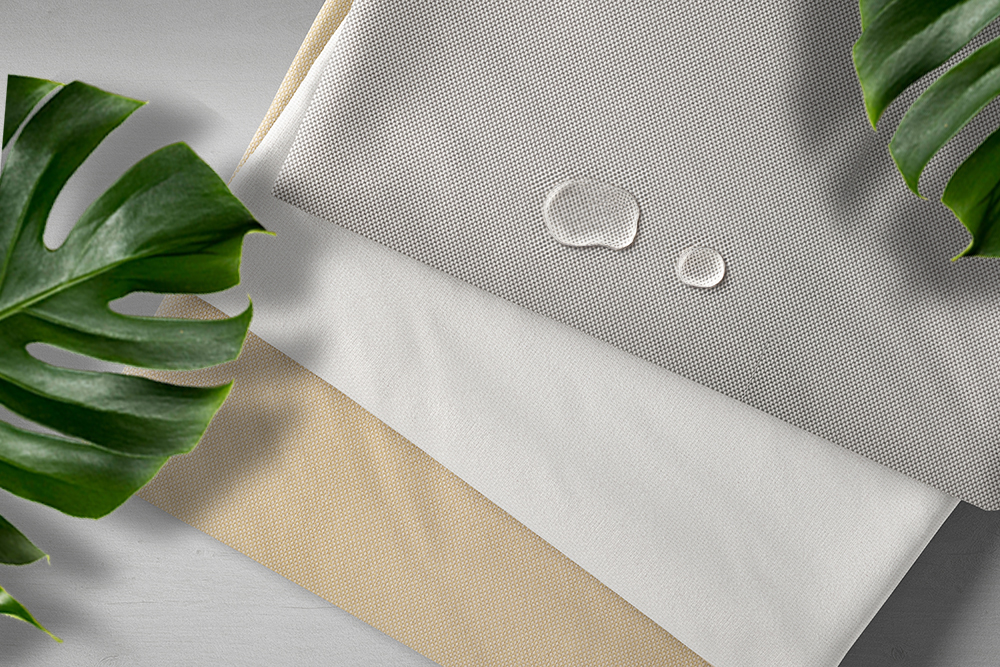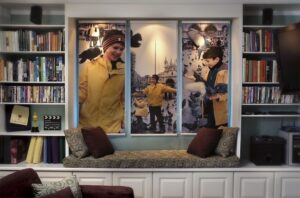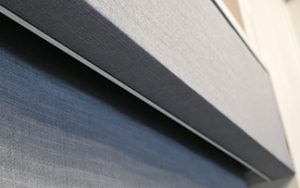Table of Contents
When it comes to choosing window shades, most people focus on the style—roller, zebra, sheer, cellular, and so on. But one thing that’s just as important, yet often overlooked, is the fabric itself. The right material doesn’t just affect how much light gets in—it can also impact indoor air quality. That’s why understanding window shade fabric certifications matters.
Some fabrics may contain or release chemicals over time (called VOCs, or volatile organic compounds), which can affect the air you breathe. If you’re shopping for eco-friendly window coverings, non-toxic roller shades, or UV-blocking options, knowing a few key fabric terms—like certifications, treatments, and care symbols—can help you make a safer, smarter choice.
Fabric Certifications: The Trust Signals You Want on Your Shades
Not all fabrics are created equal. Some are breathable, durable, and safe for your indoor air quality. Others? Not so much.
When you see these window shade fabric certifications, that’s a good sign the manufacturer took things seriously—from sourcing to chemical safety.
These labels help you spot high-quality, low-toxin fabrics that won’t compromise your health or your space.


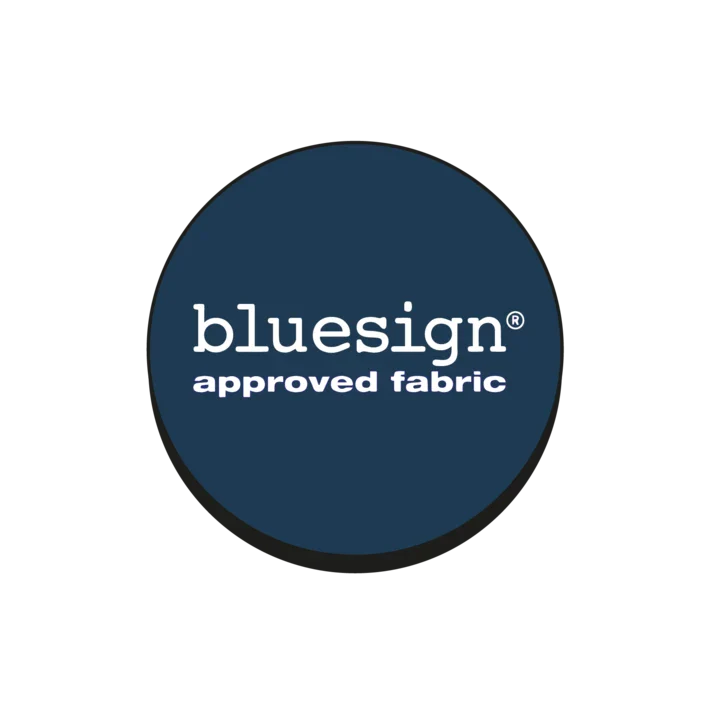
OEKO-TEX® Standard 100
If you see this tag, it means the fabric has been tested for more than 100 harmful substances. This includes things like formaldehyde, lead, and phthalates—common in some synthetic fabrics but not something you want hanging in your living room.
Where it shows up: Roller shades, zebra shades, solar screen materials, and blackout fabrics.

GOTS (Global Organic Textile Standard)
This one’s mostly for natural fabrics like cotton and linen. It guarantees that the fibers are organically grown and processed without harmful chemicals. Also covers ethical labor and environmental impact.
Great for: Drapery panels, Roman shades, or any fabric-forward treatment that uses natural fibers.

Bluesign® Approved
Bluesign focuses on responsible production, minimizing water waste, energy use, and toxic input during the manufacturing process. If sustainability is high on your checklist, this is one to look for.
Common in: Performance fabrics, especially solar and moisture-resistant shades.

What Makes a High-Quality Window Shade Fabric? A Closer Look at the Specs
Beyond certifications, it’s also helpful to understand what actually goes into the fabrics you’re choosing for your shades. At Sun Glow, each fabric comes with its own set of strengths—whether you’re looking for privacy, light control, sustainability, or safety.
Here’s a breakdown of what you’ll typically find in high-performing window shade fabrics (don’t worry, no deep science degree required):
Light Filtering vs. Light Blocking
Some fabrics are designed to let in filtered light while reducing glare—perfect for living rooms or offices where you want natural light without the harshness. These are usually referred to as solar or sunscreen fabrics, and they come in different levels of openness (which basically means how much light they let through).
Other fabrics are more about privacy and blackout, which makes them a better fit for bedrooms or media rooms. These don’t just dim the light—they block it almost completely.
Check out our article on the benefits of blackout roller shades for sleep and energy efficiency to learn more.


Eco-Friendly and Flame-Retardant Options
Many of Sun Glow’s fabrics are made from materials like recycled polyester or Trevira CS, which are not only durable but also flame-retardant. That means they meet safety standards for both homes and commercial spaces.
You’ll also find several fabrics that are Oeko-Tex® or GreenGuard certified, which tells you they’ve been tested for harmful substances and are safe for indoor air.
If sustainability is a priority, look for eco-conscious picks like Apex View or EPT 301 in our fabric collection—both made from 100% flame-retardant polyester and available in wider widths for big windows.
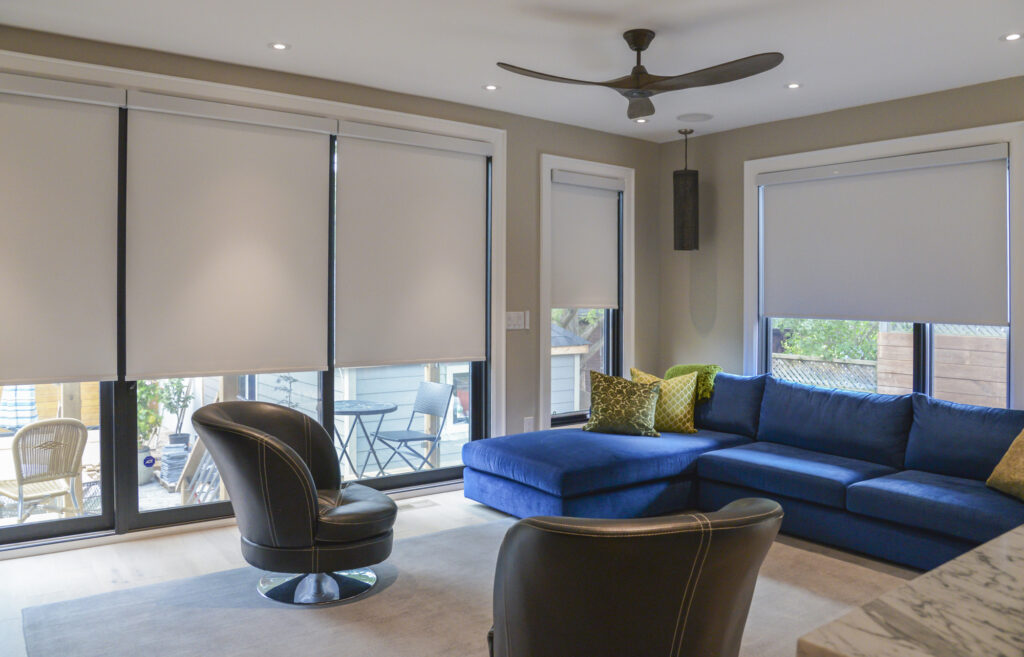
Special Features: More Than Just Fabric
-
- Anti-microbial treatments – Help keep things fresh and clean, especially in moisture-prone rooms like bathrooms.
-
- Sound absorption – Can subtly reduce echo or noise in large open-concept spaces.
-
- Reflective backings – Bounce sunlight away, helping keep your room cooler in summer.
These features aren’t always visible, but they can seriously boost your fabric’s functionality.
Not sure which rooms would benefit from these features? Check out our guide to choosing the best shade styles for every room.
Care Made Simple
You don’t need anything fancy to take care of most shade fabrics. A soft, damp cloth and a little mild soap are often all you need. Bleach or harsh cleaners are a no-go, especially on specialty fabrics with coatings or reflective surfaces. As a rule of thumb, spot-cleaning is your best bet for everyday upkeep.
For more detailed instructions on fabric maintenance click here.
Fabric Treatments: The Extra Features You Didn’t Know You Needed
Beyond the base material, shade fabrics often come treated for performance—whether that means repelling water, blocking UV rays, or resisting flames. These treatments can seriously extend the life and functionality of your window coverings.
Flame-Retardant Coating
Essential in commercial spaces or areas like kitchens and nurseries. Just make sure it’s done without toxic additives—many newer options are halogen-free and Greenguard certified.
Best for: Roller shades in high-traffic areas or public-facing rooms.

UV Protection
Whether you’re dealing with all-day sunlight or just want to prevent your furniture from fading, UV-blocking treatments are a quiet workhorse. Many solar shades can block 90%+ of UV rays. Interested in UV – blocking treatments? Check out our blog on reducing heat and saving energy during the hotter months.
Ideal for: Solar shades, dual shades, or large windows in bright rooms.
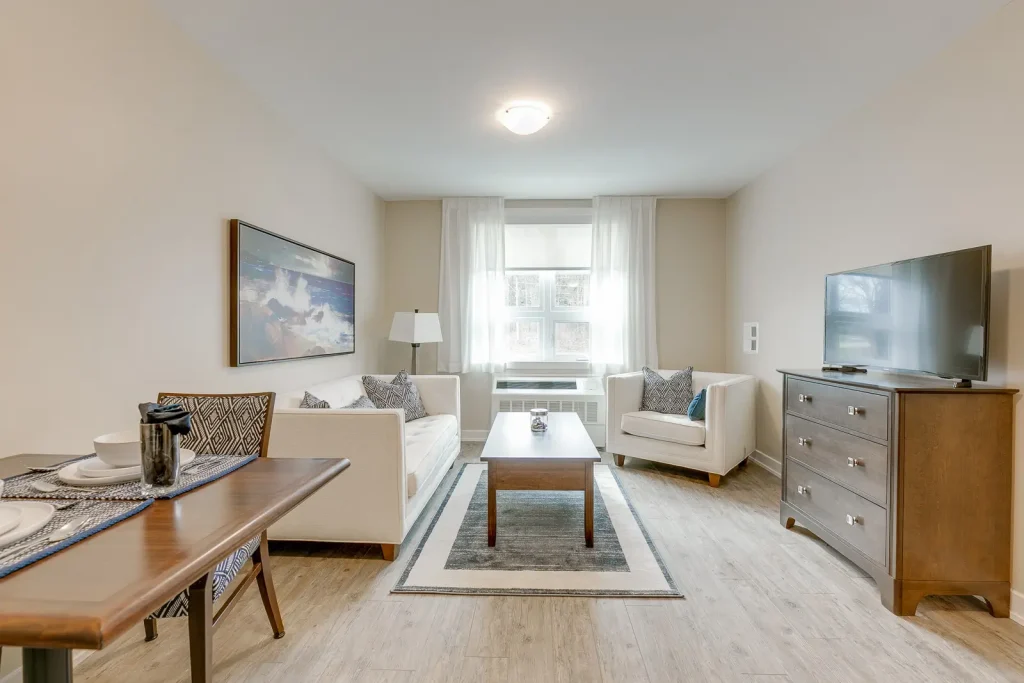
Anti-Microbial / Odor-Resistant Coating
Helps reduce the growth of mold, mildew, and bacteria. Not a necessity in every home—but definitely a nice-to-have in humid areas or homes with pets.
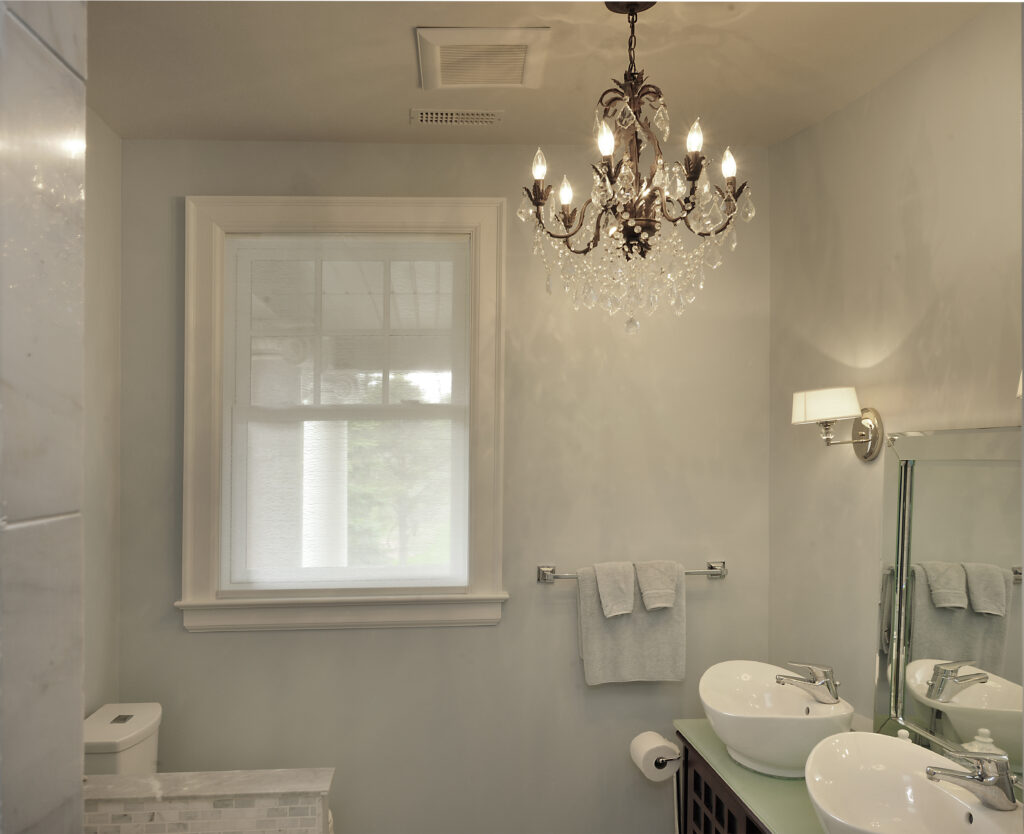
Care Symbols: A Quick Guide to Fabric Maintenance (Yes, Even for Shades)
You might not throw your window shades in the wash, but that doesn’t mean care instructions don’t matter. Especially if you’re dealing with removable fabric panels, Roman shades, or custom drapery, knowing what those care tags mean can save you time (and money).
| Care Label | Meaning |
|---|---|
| Spot Clean Only | Use a damp cloth with mild detergent. Most common for roller and solar shade fabrics. |
| Do Not Bleach | Bleach can break down coatings or fade fabric colors. Avoid chlorine or strong chemical cleaners. |
| UV Resistant | Fabric is designed to withstand sunlight exposure without fading or deteriorating quickly. |
| Flame Retardant | Treated to resist ignition and slow fire spread. Often required in commercial installations or near heat sources. |
How to Choose High-Quality Fabric for Your Shades
At the end of the day, your fabric choice should balance performance, safety, and design. And while the shade style gets a lot of attention, window shade fabric certifications and treatments are what determine how well those shades will function in the long run.
Room-by-Room Fabric Feature Guide:
| Room | Top Fabric Features to Look For |
|---|---|
| Bedroom | Blackout, OEKO-TEX certified, UV blocking |
| Bathroom | Water-repellent, mold-resistant, anti-static |
| Kitchen | Wipeable, Greenguard certified, flame-retardant |
| Living Room | Light-filtering, UV protective, certified organic (if using natural fabrics) |
| Nursery/Kid’s Room | Cordless, OEKO-TEX, flame-retardant, low-VOC |
| Home Office | Solar screen, glare reduction, anti-static |
Final Word: Fabric Isn’t Just an Afterthought
You’ve probably already picked out your style—maybe it’s sleek rollers, cozy cellulars, or dramatic dual shades. But before you finalize that order, take a closer look at what’s in the fabric.
Window shade fabric certifications, treatments, and care symbols all contribute to safer, longer-lasting, and better-performing shades. And whether you’re outfitting one room or your whole home, knowing how to decode this information will help you make choices that align with your values, your lifestyle, and your design goals.
If you’re not sure where to start, or if you’re wondering which certifications matter most for your space—let’s chat. There’s always more behind the material than meets the eye.

